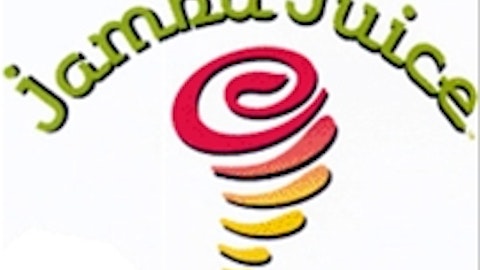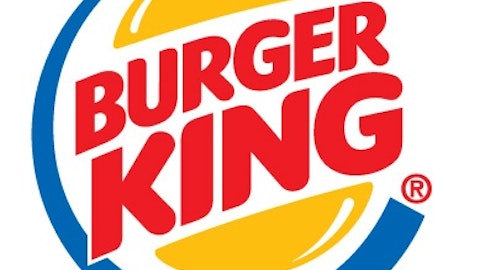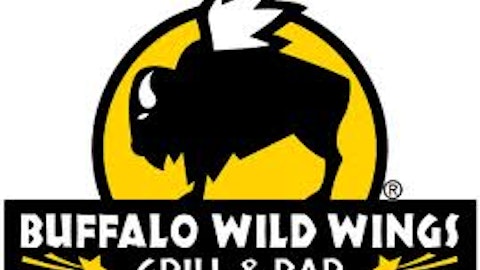
The Great Disruptor
If Green Mountain Coffee Roasters Inc. (NASDAQ:GMCR) was just a fad, or couldn’t effectively compete, why would Starbucks Corporation (NASDAQ:SBUX) and Dunkin Brands both choose to license their iconic brands in K-Cup formats? In addition, why would Starbucks Corporation (NASDAQ:SBUX) choose to create a machine (Verismo) to compete in the single serve market? I would actually argue that once these two giants decided to license with Green Mountain Coffee Roasters Inc. (NASDAQ:GMCR), they essentially told the market, “here is your single-serve leader.”
If you are talking about places you can go and get a hot or cold coffee, you would have to include everyone from Panera Bread Co (NASDAQ:PNRA), to McDonald’s Corporation (NYSE:MCD), to your local convenience store. However, with every quarter that passes, Green Mountain sells more Keurig and Vue machines. The more machines are sold, the greater the demand for K-Cups and Vue packs later. In theory, as customers use these at home coffee options, they might buy less away from home.
Just In Case You Don’t Believe Yet
In case you think that Green Mountain’s Keurig lineup is just a fad, consider that for the last three years the company has sold successively more brewers during the holiday season than the year before. In the current quarter, the company sold just short of five million machines. This increase in brewers represented a 14% increase in revenue from last year. The company’s single-serve pack business was also strong showing a revenue increase of 21%.
With five million new brewers in homes and businesses, it’s a good bet that the single-serve business will pick up in the coming months. Keep in mind these strong sales occurred after the much talked about K-Cup patent expiration in September of 2012. I think the thing that Wall Street forgets is, the average customer has no idea about this patent expiration. With a 27% increase in non-GAAP EPS, I think we can tell this expiration wasn’t the crushing blow to the company many people expected.
Share Repurchases Done Right
If you are looking for a company that knows how to repurchase shares the right way, I present to you Green Mountain. There are many examples of companies that repurchased shares when their stock was expensive, only to stop these repurchases when the stock dropped.
In the last two quarters, Green Mountain retired 7.4 million shares at an average price of $23.65. At this price, the stock was trading for a forward P/E of under 9. Since the company knew to expect sales growth of 15% to 20%, it was a good bet that shares wouldn’t stay that low for long. In addition, because the shares were so cheap, the company was able to retire 4.2% of their diluted share count.
Among their competition, this was the second highest year-over-year percentage. By comparison, only Dunkin Brands retired more shares with nearly 11% of their outstanding stock retired. Their other peers weren’t even in the same ballpark, with McDonald’s retiring 1.76%, Starbucks Corporation (NASDAQ:SBUX) retiring 0.94%, and Panera Bread’s share count actually increasing by 0.06%.
Relatively 44% Cheaper
The second reason Green Mountain looks like a great value is their stock is still relatively the best value among their peers. To compare companies that pay dividends with companies that don’t, I like to use the PEG+Y ratio that Peter Lynch suggested in his writings. The PEG+Y takes the company’s expected growth rate, adds the current yield, and divides the product by the P/E ratio. This ratio works sort of like an inverse PEG ratio. In this case, the higher the number, the better.
Where Green Mountain is concerned, their forward P/E ratio is 15.55, and analysts are projecting 18.85% EPS growth over the next few years. These numbers give us a PEG+Y of 1.21. The next best value in the industry is Panera Bread at 0.84, from their 19% growth rate and P/E of 22.7. The rest of the companies all pay dividends, but either have higher P/E ratios or lower expected growth rates. Starbucks’ 1.5% yield and 18% growth rate only rates third place at 0.82 because of their higher P/E ratio. McDonald’s and Dunkin Brands pay yields of over 3% and 2% respectively, but they aren’t expected to grow as fast. This relatively slower growth, accounts for PEG+Y ratios of 0.73 at both companies. As you can see, based on this measurement, Green Mountain is relatively 44% cheaper than their next closest competitor.
Green Mountain is projecting 15% to 20% sales growth this year, and is committed to continued share repurchases. The company says their gross margin should improve, from lower returns, and decreased warranty expense. In the last six months, their cash balances are up 38% and long-term debt has been cut 26.7%. Given that the stock looks like the best value of the group, what more could you ask for?
The article Serving Up A Cup Of Value originally appeared on Fool.com and is written by Chad Henage.
Copyright © 1995 – 2013 The Motley Fool, LLC. All rights reserved. The Motley Fool has a disclosure policy.





